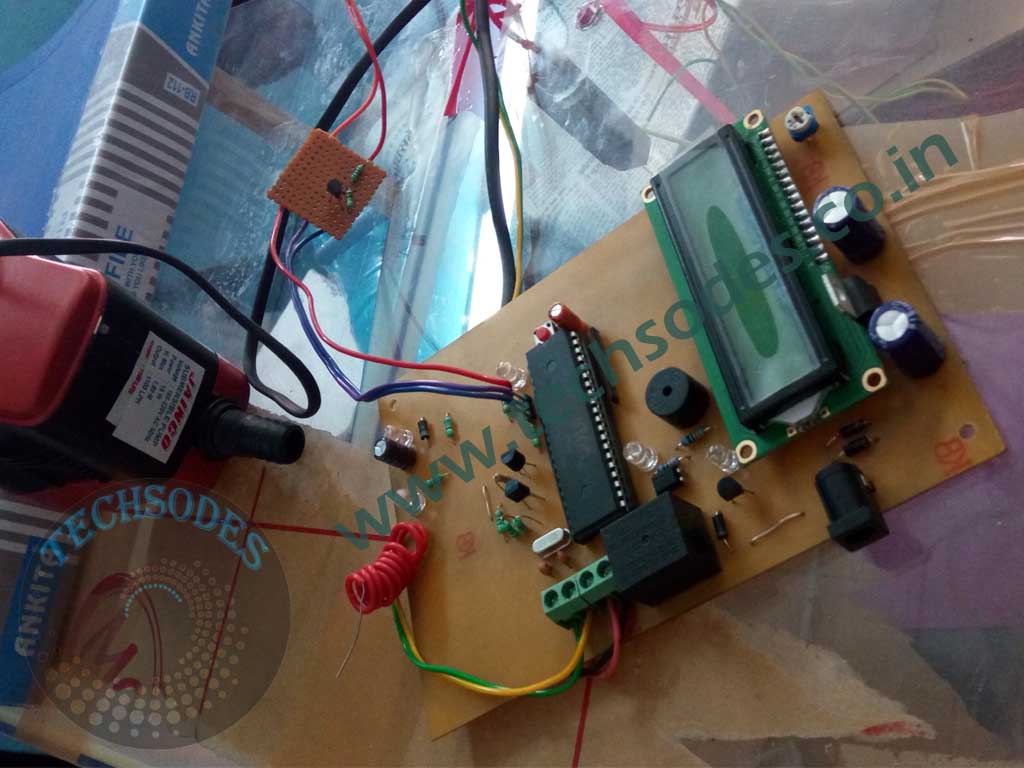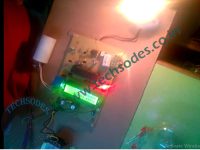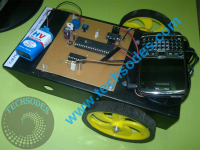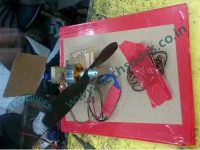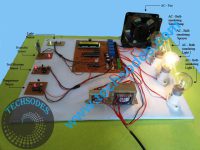Description
GSM-Based Motor Control for Irrigation System:
The GSM-Based Motor Control for Irrigation System is an innovative project designed to automate irrigation processes using a SIM800L GSM module, an 8051 microcontroller, a soil moisture sensor, and a relay-controlled motor. The system automatically waters the field when the soil moisture level drops below a threshold, ensuring efficient water usage. Additionally, it allows the user to control the motor remotely via SMS, making it ideal for farmers or agricultural areas where manual intervention is impractical.
1. GSM-Based Motor Control for Irrigation System Overview:
The system integrates several components, including an 8051 microcontroller, a SIM800L GSM module for communication, a 16×2 LCD for displaying real-time data, a soil moisture sensor to monitor water levels in the soil, and a relay to control the motor. The setup enables the irrigation motor to turn on when the soil moisture falls below a certain level and turn off once the soil is adequately irrigated. SMS alerts keep the user informed about the system’s status, and the user can manually control the motor by sending SMS commands from any remote location.
2. GSM-Based Motor Control for Irrigation system Components Used:
8051 Microcontroller:
The 8051 microcontroller acts as the brain of the system, processing inputs from the soil moisture sensor and controlling the motor through the relay. It also communicates with the GSM module to send and receive SMS messages, and interfaces with the LCD to display the current status of the system.
SIM800L GSM Module:
The SIM800L is a GSM/GPRS module used for wireless communication. It enables the system to send SMS alerts to the user whenever the motor is turned on or off, or when the soil moisture level changes. Additionally, it allows the user to send SMS commands to manually control the motor, making the system highly versatile and user-friendly.
16×2 LCD:
The 16×2 LCD is used to display important information such as the status of the motor (on/off), soil moisture levels, and GSM communication status. This provides a user-friendly interface for local monitoring of the system.
Soil Moisture Sensor:
The soil moisture sensor is a critical part of the system. It continuously monitors the moisture level in the soil. When the moisture drops below a preset threshold, the sensor sends a signal to the microcontroller, which in turn activates the relay to switch on the irrigation motor. When the soil moisture reaches 100%, the system automatically turns off the motor, conserving water and power.
Relay Module:
The relay module is used to control the motor’s power supply. The microcontroller triggers the relay based on inputs from the soil moisture sensor, turning the motor on when irrigation is required and off when the soil is adequately irrigated. The relay ensures the motor operates at the correct voltage and current ratings, making it safe for use in agricultural environments.
3. Operation of GSM-Based Motor Control for Irrigation System:
The system is designed for full automation of irrigation processes while also providing the user with manual control via SMS. Here’s how it works:
Automatic Operation:
Soil Moisture Monitoring: The soil moisture sensor is continuously monitoring the field’s moisture levels. When the soil becomes dry, and moisture falls below the predefined threshold, the sensor sends a signal to the 8051 microcontroller.
Motor Activation: Upon receiving the signal from the moisture sensor, the microcontroller activates the relay, which turns on the motor. Water is pumped into the field to irrigate the crops.
Motor Deactivation: Once the soil moisture reaches the set upper threshold (100% irrigation), the sensor signals the microcontroller again, which then deactivates the relay to turn off the motor, thus preventing over-irrigation.
SMS Alerts and Remote Control:
The GSM module allows two-way communication with the user:
SMS Alerts:
The system sends an SMS alert to the user when the motor is turned on or off, ensuring that the user is always informed of the irrigation process. This is particularly useful for farmers who may not always be on-site.
Manual SMS Control: The user can send an SMS command to the system to manually turn the motor on or off. This feature adds flexibility to the system, allowing the user to override automatic operations when needed. For example, if the weather forecast predicts rain, the user can send a command to keep the motor off, conserving both water and electricity.
4. GSM-Based Motor Control for Irrigation System Power Supply:
The system is powered by a standard 12V power supply, which provides power to both the microcontroller and the SIM800L GSM module. The relay and motor are powered by a separate AC supply, but the microcontroller ensures the motor operates only when necessary, helping conserve energy.
5. GSM-Based Motor Control for Irrigation System Applications:
The GSM-Based Motor Control for Irrigation System can be applied in various agricultural and horticultural settings, especially where large-scale manual irrigation is impractical. Its features and automation make it ideal for:
Farms: Large-scale farms where remote irrigation control can save significant time and effort.
Greenhouses: Automated irrigation helps maintain the ideal moisture levels in greenhouses, where precise water control is essential.
Gardens and Lawns: This system can also be adapted for use in residential gardens, ensuring plants receive the right amount of water without overuse.
6. GSM-Based Motor Control for Irrigation System Benefits:
Remote Monitoring and Control: The ability to control the irrigation system via SMS from any location adds convenience and flexibility for users.
Water Conservation: Automatic control based on real-time soil moisture levels prevents water wastage and ensures crops are not over-watered.
Energy Efficiency: By ensuring the motor operates only when necessary, the system conserves energy, reducing operational costs.
User-Friendly Interface: The 16×2 LCD provides a clear, easy-to-read display of system status, while the SMS feature ensures constant communication with the user.
6. GSM-Based Motor Control for Irrigation System Conclusion:
The GSM-Based Motor Control for Irrigation System is a highly efficient and practical solution for automating irrigation processes. By integrating GSM communication with soil moisture monitoring and motor control, the system ensures optimal water usage, reducing manual labor and conserving resources. The ability to remotely monitor and control the motor via SMS further enhances its practicality, making it an ideal tool for modern, sustainable agriculture.

